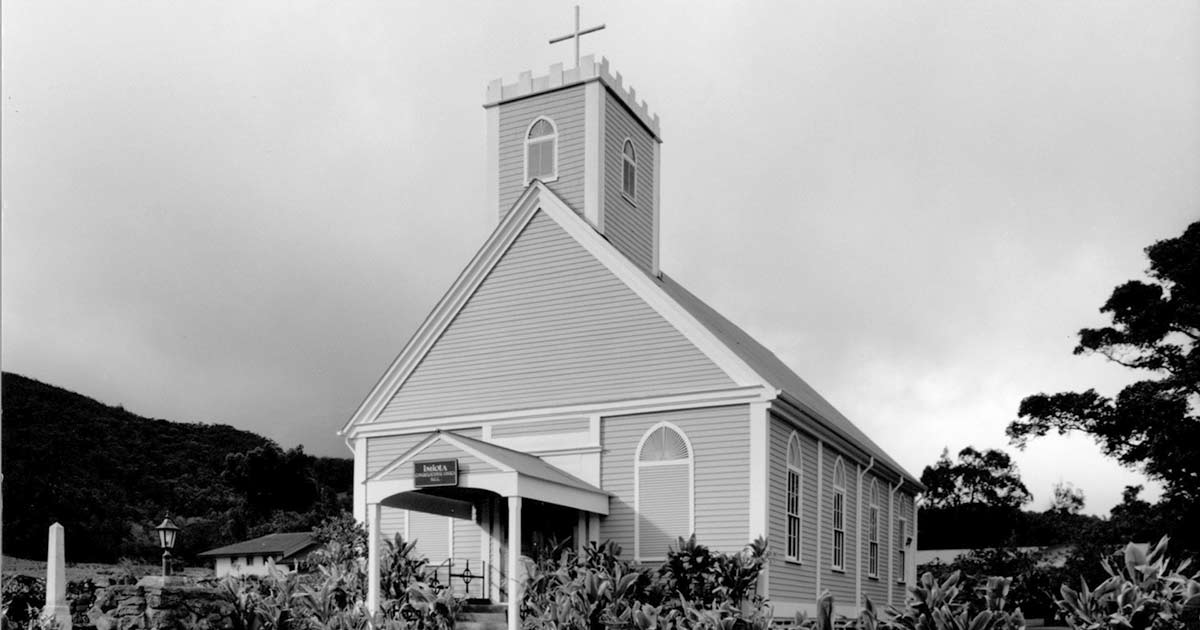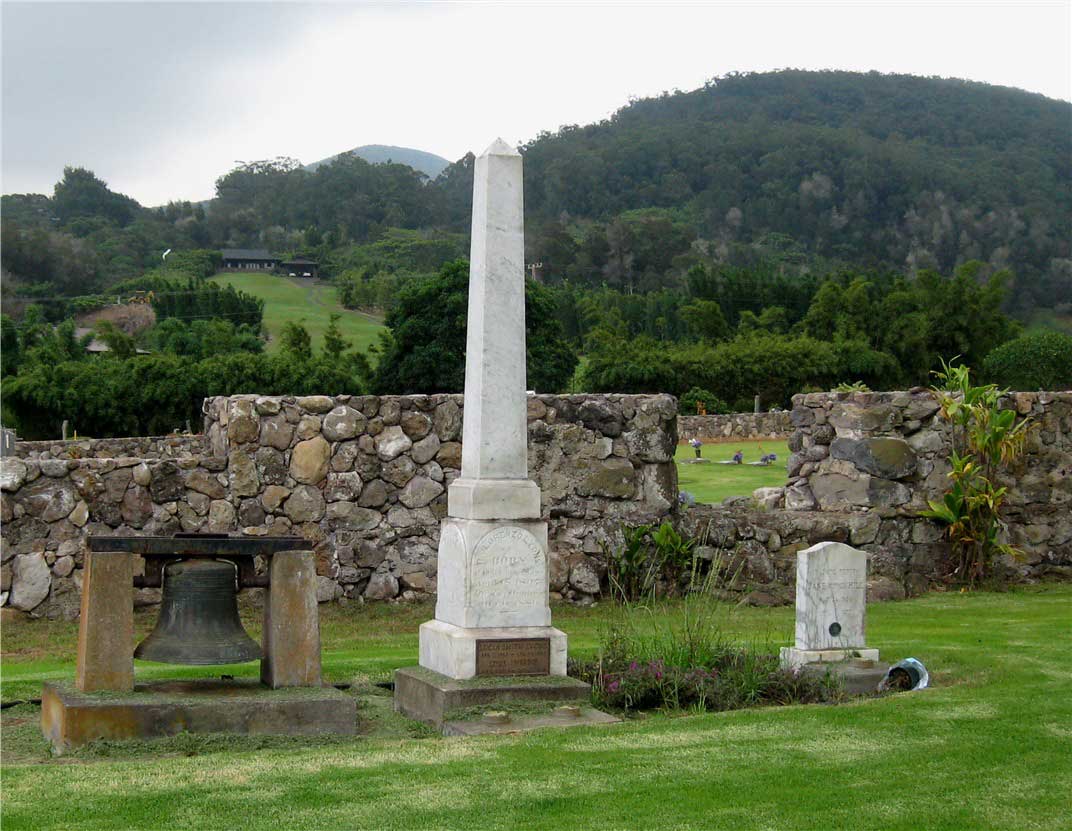
Imiola Congregational Church – photo courtesy Historic Hawaii Foundation
It’s November, the season of thanksgiving and a time to reflect on the many blessings we share, including the beauty that is Waimea and the many inspired, generous, and determined people who have helped build this special community.
Thanksgiving is a traditional American holiday that was standardized in 1863 by President Abraham Lincoln. It is marked with images of harvest, family and food. Ancient Hawaiians celebrated Makahiki, a festival of thanks and peace that ran for four lunar months. Whatever cultural traditions we may hold, a common theme among these celebrations is the acknowledgment of a higher power.
For such a small community, Waimea has always embraced a varied and diverse religious culture. This is evidenced by the prominent number of churches in our community, most notably along the stretch of Mamalahoa Highway locally known as “Church Row.”
The father of Parker Ranch, John Palmer Parker, proved to be not only a civic leader but also a spiritual one. He arranged for the presence of a small chapel at Mana, the original ranch headquarters. Worship was a central factor in the well-being of the ranch employees, ultimately leading to the establishment of “Church Row” by Parker Ranch.
Currently, there are five active churches in this area, New Hope Christian Fellowship, ‘Imiola Congregational Church, Ke Ola Mau Loa Church, Kamuela Hongwanji Mission, and Calvary Hillside Church.
In the early 1900’s, well-known ranch manager, A.W. Carter was clear in his mandate to provide places of worship for ranch folks and the community. His concern for the spiritual needs of the community extended beyond his own denomination as he stated, “I have chosen not to favor any church over the other. We will help them all as long as they do good work.”

Reverend Lorenzo Lyons grave site
Waimea’s first Christian church, ‘Imiola, was established in 1830, with the beautiful koa structure being completed in 1857. Reverend Lorenzo Lyons, a Congregationalist missionary from Massachusetts arrived at the church in 1832 and spent the next 54 years ministering to the Waimea, Kohala and Hamakua communities. Like Parker, he embraced the Hawaiian people and their language, composing some of the most beloved Hawaiian hymns, including “Hawai‘i Aloha.” (Wikipedia)
Upon his death in 1886, Lyons was buried in the family plot adjacent to their home some distance from the church. Several decades later, the property fell into serious disrepair and the building was demolished, leaving the minister’s grave deserted and neglected. A.W. knew that Hawaiian people had a reverence for human remains, and he understood their expressed desire to move the Reverend’s grave to his beloved ‘Imiola Church. Thanks to him, Reverend Lyons’ remains were exhumed and reintered at the church graveyard, followed by resetting of the headstone and a marble spire monument, culminating with an inspiring spiritual service. (Loyal to the Land I)
The Kamuela Hongwanji Mission also shares a deep connection to Parker Ranch. Ranch superintendent, Yutaka Kimura played a pivotal role in the erection of Church Row’s Buddhist Temple. After World War II, he felt the need to help heal the wounds of the community. He made it his personal mission to bring everyone together and he did it by faith. He reached out to Hartwell Carter and Hartwell immediately reached out to Richard Smart in hopes Parker Ranch would support in any way they could. Yutaka was given permission to dismantle and move one of the Keamuku structures from the ranch and re- assemble in at Church Row where it was dedicated on October 25, 1954. (Buddhism and Kamuela Hongwanji Mission, Yutaka Kimura oral history).
During this month’s Thanksgiving celebrations, we offer our appreciation to the stewards of our ranching community who have provided a spiritual model of love and tolerance that remains an example for us all. Mahalo nui, and Happy Thanksgiving!
